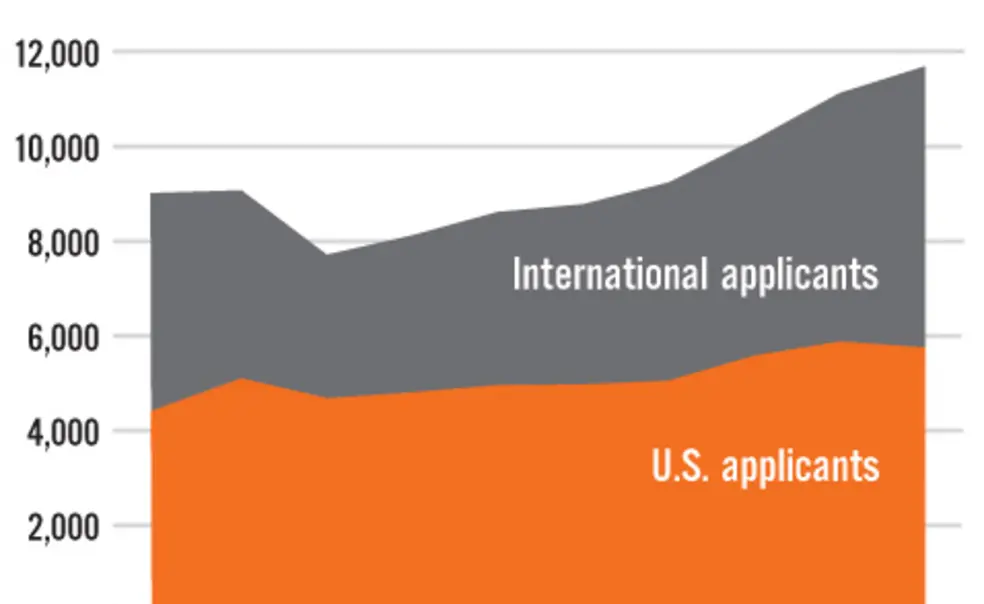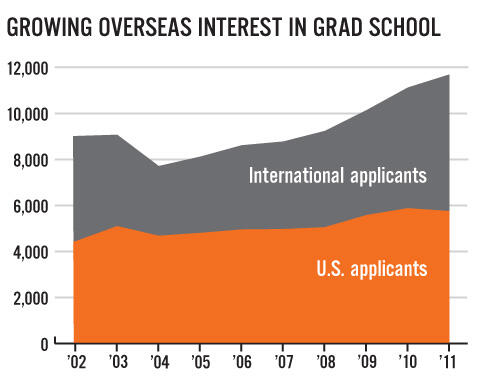International students fuel growth in grad applications
International applications to the graduate school increased by 13.2 percent this year, and for the first time since 2002, international applicants outnumbered U.S. applicants. The overall pool grew by 5 percent compared to last year, with the number of prospective students from the United States dropping by 2.1 percent.
Of the 11,698 applicants, 1,197 (10.2 percent) received offers of admission, and 623 students have accepted those offers, according to figures released May 4. Princeton’s 52 percent admission yield marks a slight decrease from the 54 percent reported in the last two years.
International applicants had a lower success rate than their domestic peers, with 416 (7 percent) receiving admission offers; 229 of those students plan to enroll in the fall.
Applications from all American minority groups were virtually flat, making up a quarter of U.S. applicants, but the number of admitted students from all minority groups grew from 116 in 2010 to 198 in 2011. For students in underrepresented groups (African-Americans, Latinos, and Native Americans), Princeton saw a notable increase in its yield, with 52 of the 74 admitted students accepting (70 percent). In 2010, 33 of the 72 underrepresented minority students who were offered admission chose to enroll (46 percent).
The chemistry department, with a new building and new faculty members, was a strong draw, attracting 37 Ph.D. candidates, seven more than this year’s target. The new Program in Population Studies will enroll four students in the fall.













No responses yet